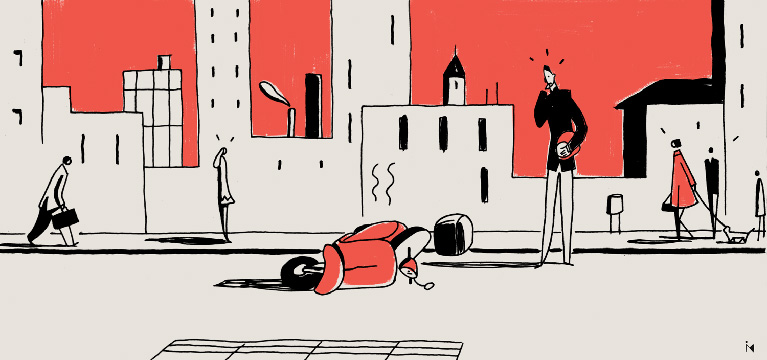Last week i made a mistake which immediately cost me a fright, and almost more than that. I was riding my moped in Madrid on a wet day and i accelerated too strongly out of a traffic light as i rode over a metal grid. I guess i lowered my guard – for sure there are less wet days in Madrid than in London, where i used to be based. My moped rear wheel lost grip and the moped spun around – then i found myself riding backwards…until the kerb of the sidewalk stopped the motion and i fell onto the pavement – not too badly thank God.
As i was getting up, a car driver stopped by, and then a Guardia Civil crossed the road towards me. All i found myself saying, half ashamedly was, “i am ok, the metal grid made me lose grip, i accelerated too strongly”. I was already trying to learn from my mistake from just a second ago.
Over quite a few years I had already learned about the dangers to riders from painted lines, oily bends and even cyclists not stopping at red lights. I even just got a three wheeled moped to mitigate risks!
Experience and memory have been building up to protect me, and every time a small incident happens that is a good thing as long as you learn from it. Those are “antifragile” events as Nassim Taleb explains in his brilliant book. It is so paradoxical that this happened to me now, when i had just been wondering about the risks brought to others by the rental of electric scooters and mopeds which instantly deliver a faster form of transport to people that have had little time to build up their experience (and which often do not even wear helmets). I missed the beam in my own eye!
Moving on to investment, Daniel Kahneman pointed out two key requirements for learning in general which i realise make learning from mistakes very challenging for investors: one, the fact that it often takes us humans the repetition of an error to really learn something for good; and two, the fact that the root cause of investment errors is sometimes very far in time from the ultimate consequences.
Firstly, investment training is not like tennis training, where you can have more and more practice balls at almost no extra cost. In truth, there is actually no such thing as “training” in investment. The behavioral response cannot be faked with a paper portfolio, nor can trading conditions. The acquisition of investment experience can be very expensive; it can cost money and even an investment career. Many simply avoid good investments and active management to never make a mistake and preserve their careers.
Secondly, due to the temporal disconnect between action and reaction in investment it takes years to test the robustness of an investor´s investment process and risk management. Again this is very much unlike tennis where the feedback is instantaneous – you either hit the ball well or not, and straightaway it´s either in or out.
For investors it takes cycles, and sell offs, and rallies, and 5-sigma events of those which seem to occur so much more often than predicted by statistics. And every error will be a new test to make or break an investor, to show his ability to preserve capital, the behavioural impact in its aftermath, and his ability to draw new lessons from it. Investors need to also learn from errors which could have cost them but where luck helped and they didnt´t; yes there are some of those too – “free training”, although we humans tend to learn less from those.
The above is actually very topical for ourselves these days. We at Cobas have been taking a bit of heat recently. Performance hasn´t been stellar this year and part of that relates to our investment in Aryzta.
On the back of our investment philosophy and through our investment process, which was developed and honed over the years of our collective experience, we undertook our research and spent considerable time and resources to make sure we didn´t make a mistake. We always do this. And as our confidence grew Aryzta´s weight in the portfolio also grew.
Still, we made a different kind of mistake – not about the business or the balance sheet. We were trusting too much in management and their word, led by our prior good experience with the chairman. Then came the fall, which has been antifragile – that is, it didn´t really risk the fund thanks to diversification. And thanks to margin of safety we stand to perhaps recover much of our investment in it (not the cost of opportunity).
We have learned from our mistake already. But clients and family rightly ask us about the Aryzta case, testing our investment process and our behavioural scars. And we tell them that we are ready to move on and we will decide from scratch whether to stay in it or rather invest in other alternative options, assessing risk and reward from where we stand today.
As i accumulate riding hours i keep perfecting my riding. Equally, as time and events go by our investment process at Cobas grows more and more solid. Moped falls and investment errors are never free, and perhaps they shouldn´t be so that we really learn from them. What they should be though, is small enough so that we can try another day. In this way, over time experience can build up and make our riding skills and our investment process more and more robust. After all experience is the father of wisdom, and memory the mother.
Did you find this useful?
- |







